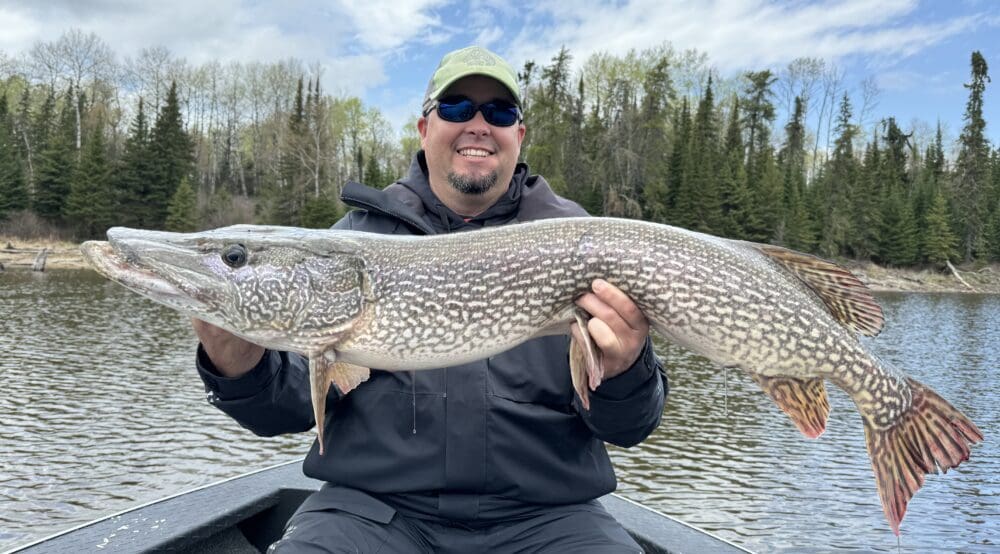The first fishing report of the season usually revolves around some version of an extreme condition: last year it was a blazing hot start that led to a tough fire season, the year before was a 100 year flood, the years before that we were dealing with Covid, and the list goes on.
If there was such a thing as a normal spring and ice out in northwest Ontario, then this has been as close as it gets. It was a mild winter and there was very little snow. I was hoping for an early ice out, but April turned cool. The ice went out on Lac Seul May 7. The 30-year average is May 8.
After the ice went out, we had some nice days and we had some cold weather. We had a few days of sunshine leading up to opener and the first groups had great fishing. On Wednesday, we had a massive front move in. We are talking about inches of rain, 50 mph winds, and it ended in snow flurries. The next few days were cold, cold. I called Wednesday morning a blow out and no one fished. We had a few bold anglers that went out for an hour or two in the afternoon, but they may have well stayed in.
And that is a normal May. It is a gamble. One weather system can have an enormous effect on production. If you take that 2.5 day weather event out of the equation, then we have had a great start to the season. The Peter Martin group crushed it. The middle of the week was tough.
We started the year with relatively low water conditions. Some of the fishing forums have had exaggerated reports of how low the water is. Lac Seul always begins the season low and builds up. The change is usually 5 ft. This year at ice out the lake was at 1164.62 ft. above sea level. Full pool is 1171. The average is 1165 at ice out. I may have been concerned until it started raining. My guess is that if the trend continues, then we will be close to normal levels by the time we get to June 1.
For the week, the numbers have been good but not off the charts. We know the weather was the issue, but I was still surprised at how well we did despite the conditions. For the week, we caught and released 24 walleyes over 27 in., including 4 – 28s. Early in the week, we focused on the north shore spawning population. By the end of the week, we were already catching the first wave of big walleyes migrating back towards the main lake basin. Light jigs (1/8 oz.) and minnows were key. We caught a few pitching shallow, but the majority of the big walleyes were caught in 8 – 14 ft. of water. For those watching this forum for details – I have seen 60 degree water just once this year. We are catching walleyes in water that ranges between 44 – 51 degrees. I told you that this is a normal year, but that is not.
That surface water temperature issue is also the reason for the difference in big pike production from the first half of the week to the second half. Before the front, the guides found big pike shallow in and around wind protected bays. After the front, many of those bays saw water temps drop from 58 to 44. And the big girls were gone. For the week, we caught and released 26 pike over 37 in., including 1 – 40, 1 – 41, and 2 – 43s. Big spoons were key in shallow water. We caught a few incidentals walleye fishing, but most of the big ones were targeted.
We don’t chase them at ice out, but every year we see more and more big bass up shallow where we are hunting walleyes. For the week we released 9 smallmouth over 19 in.
We know that there will likely be huge changes in the coming week. You can’t trust the forecast, but the walleyes know that they want to move towards the Silver Water Wheel basin. A cold front may slow them down, but they are still on the move. And we will be ready.

